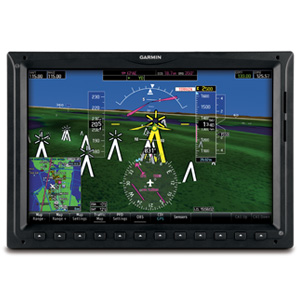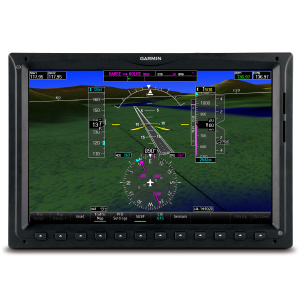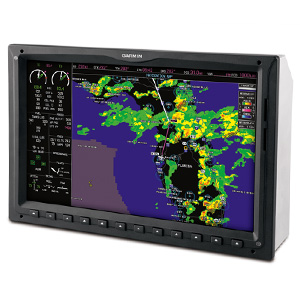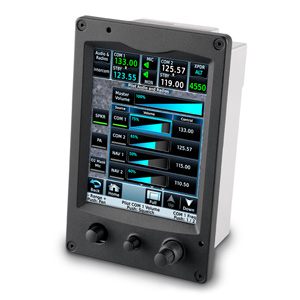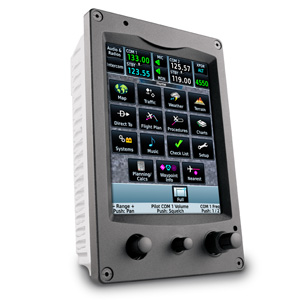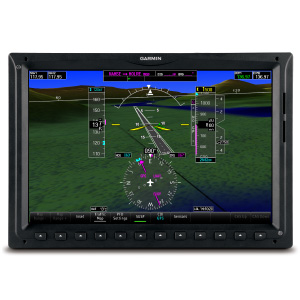G3000®
Fingertip Control Meets Integrated Flight Deck
- Advanced flight deck for light turbine jets
- Bright high-resolution displays with SVT™ let you see clearly even in IFR conditions
- Displays divide into 2 pages to help display multiple systems and sensors
- Intuitive touchscreen interface with shallow menus and audible feedback
- Automatic Flight Guidance and Control Systems
- Weather, charts, traffic, terrain and Global connectivity options

Suddenly, fingertip navigation is far more than a figure of speech. Our G3000 system is the first touchscreen-controlled glass flight deck ever designed for light turbine aircraft.
Simple, Powerful and Expandable
This digital avionics suite revolutionizes the interface between pilots and electronics: Streamlining menu structures. Eliminating visual clutter. Replacing a whole host of mechanical knobs, buttons and selector switches. What’s more, by centralizing data entry in one easy-to-access location, G3000 takes flight deck management to a whole new level — giving pilots more focused control with less wasted motion and effort. In short, your fingertips have never touched anything quite like this.
A Truly Integrated Flight Deck
A new glass touchscreen controller, the GTC serves as your primary point of entry for the G3000 system. Featuring a desktop-style, icon-driven interface built on a new “shallow” menu structure, the GTC enables you to access more systems and sensors with fewer keystrokes or page sequences. Its user interface is totally software-based. So, it’s easily configurable for specific airframes and avionics configurations. What’s more, future enhancements, applications and system growth capabilities can be readily accommodated without physically altering the mechanical controls.
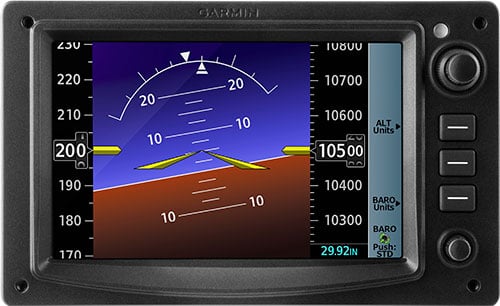
Smooth on the Move
Responsive, icon-identified “touchkeys” on the GTC controller make functions easy to locate and access with fewer hand/eye movements in the cockpit. In addition to full NAV/COMM radio management and simplified page navigation on the MFD, you can also use the 5.7-inch high-resolution GTC screen to control your remote audio/intercom system, as well as transponder codes and idents, electronic checklist entries, flight plan entry and editing, plus optional synoptic data and other selected mapping, traffic, weather, entertainment, and custom display options*. What’s more, handy “Back” and “Home” keys on the display let you quickly retrace steps or return to the desktop from any page — so you’ll never get lost in the software or need to memorize lengthy user sequences. The GTC controller can even double as a standby flight display in some configurations. Simplicity just comes naturally with G3000’s touchscreen design.
Of course, if you’re a die-hard knob-twister, you’ll be pleased to note that the GTC retains a single set of mechanical concentric knobs, along with a volume control knob and dedicated map joystick. At your option, the dual knobs can be used in lieu of the touchscreen to enter frequencies for selected radios or to toggle between Comm 1 and 2. The current function of these knobs is always clearly identified in the touchscreen window above them. So, there’s absolutely no confusion as to which knob is doing what.
It’s a Wide, Wide World up Front
Lifting your eyes from the GTC desktop, you’ll be further impressed by the wide, panoramic vista supplied by G3000’s sleek 14.1" diagonal WXGA high-resolution cockpit displays. With the extended 16:9 width-to-height ratio, these all-purpose GDU 1400 series devices can function as either a PFD or MFD — or in reversionary mode as both. When used as the pilot’s primary flight display (PFD), the wider screen provides more visual area for the simulated 3-D perspective topography of our SVT — as well as enhanced peripheral cues from an extended horizon line. Using G3000’s terrain alerting database to create a detailed graphical landscape, SVT provides a “virtual reality” perspective view of ground and water features, obstacles and traffic — all shown in relative proximity to your aircraft. Instead of a flat blue-over-brown representation, you’ll see a realistic visual depiction of flight data. So, you can picture what lies beyond the nose of your aircraft, even in solid IFR or nighttime/marginal VFR conditions. In addition, a large inset map allows more traffic and terrain/obstacles data to be accommodated on the PFD for even better situational awareness.
A More Multi-Dimensional MFD
At the center of G3000’s electronic display suite, its wider WXGA viewing format provides room for 2 separate vertical pages to be viewed side-by-side on the MFD — along with your aircraft’s EIS strip for engine and fuel data. This split-screen functionality enables you to pair, say, your airway chart and your approach plate. Or your satellite weather and flight planning pages. Or traffic, or radar, or TAWS alerts, or video inputs, or whatever makes sense at any particular point in your flight sequence¹. Graphical synoptics for airframe, electrical and fuel systems offer easier monitoring and faster troubleshooting. The high-aspect-ratio displays allow for enhanced viewing and management of multiple sensor inputs — thus making your MFD even more multi-functional.
*GPS receiver has a nominal operating velocity range of 0 – 800 kts (411 m/s).
¹Suggested applications may require optional equipment, sold separately. Specifications and descriptions are preliminary and subject to change without notice.

